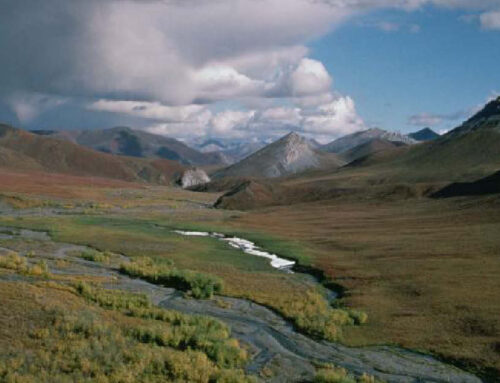Last month, Congress passed the largest and most sweeping climate spending package ever, as part of a massive budget reconciliation bill. If you’re a regular Wastebasket reader you might remember Budget Reconciliation Deal Emerges, Reconciling the Deficit, and Scoring on Oil and Gas in Reconciliation. One issue that got a nod in the bill and is a big concern for TCS is the release of methane, the largest component of natural gas. We care because it is being wasted – leaked, vented (released), and flared (burned) into the atmosphere – instead of being sold.
This is a double hit on taxpayers: not only are no royalties collected on this wasted gas, methane is also a potent greenhouse gas. Climate change costs taxpayers billions every year as natural disasters intensify, and the release of methane into the atmosphere just adds to the problem.
The Inflation Reduction Act mandates the largest oil and gas operators pay $900 per ton of methane released into the atmosphere above a certain emissions threshold starting in 2024, with the amount increasing to $1500 in 2026. This methane fee will apply to facilities emitting more than 25,000 metric tons of CO2 equivalent of greenhouse gasses annually. Although the methane fee comes with some sizable exceptions, it is the first time the federal government has imposed a fee on greenhouse gas emissions and a positive step towards finally recognizing the climate costs of continuing to drill for oil and gas.
While this is good news, we need more action, and fast. The oil and gas industry wastes billions of cubic feet of natural gas every year. Much of this wasted gas is allowed to escape royalty-free—taxpayers lose valuable revenue, consumers lose out on a marketable energy resource, and there are massive consequences for climate change. Make that a triple whammy.
Methane is a greenhouse gas 80 times more potent than carbon dioxide for the first twenty years it is in the atmosphere. Oil and gas companies lose a significant amount of natural gas during production when gasses are unintentionally leaked and intentionally released (vented) through equipment or burned off (flared) rather than captured. More than 300 billion cubic feet (bcf) of natural gas was vented, flared, or lost on federal lands—enough energy to power around 3.2 million households. And this is the tip of the iceberg. The true volume of lost gas is likely much higher, as government estimates are based on self-reported data from drilling operators. Talk about the fox guarding the henhouse.
This amount of lost gas is worth roughly $950 million. Taxpayers should have gotten close to $120 million in royalties, instead we only got about one-third of that. The current rules for methane waste were set in 1979, when oil and gas development looked a lot different, before fracking was even a thing. There is little guidance on when a royalty should be charged on lost gas, which leads to wildly uneven enforcement. In our latest report, Gas Giveaways II, we found that over the last ten fiscal years, operators in New Mexico lost just 1.4 times the volume of gas compared to those in North Dakota even though New Mexico produces significantly more oil and gas than North Dakota. However, the Office of Natural Resources Revenue (ONRR) collected more than 4 time in royalties from New Mexico than in North Dakota. New Mexico likely had stricter rules than North Dakota when determining when lost gas is subject to a royalty.
More than 80% of methane waste on federal lands comes from flaring, a common practice when oil and gas operators are rushing to produce oil without proper infrastructure to capture the commingled natural gas. Technology to economically capture methane and bring it to market exists, but companies choose to flare it because it is cheaper. Cheaper for them anyway, not for the owners of the gas – taxpayers. The Bureau of Land Management (BLM) has a statutory obligation “to prevent waste of oil or gas developed in the land” and to assess and collect royalties on the produced resources. The agency is clearly failing to fulfill this mandate.
Along with the new methane fee, the IRA codified the BLM’s authority to assess a royalty on all gas extracted from federal lands. However, the language in the legislation largely tracks the language of the 1979 rule. The BLM still needs to create clearer guidance. More importantly, it should ban all non-emergency venting and flaring.
The BLM is working on the draft of a new rule that could be released soon. The Environmental Protection Agency is also working on new rule intended to “reduce emissions of greenhouse gases (GHGs) and other harmful air pollutants from the Crude Oil and Natural Gas source category,” which is the largest industrial emitter of methane in the U.S. Ideally, the IRA and these new rules will work hand-in-hand to effectively curtail the release of methane and its negative climate impacts that cost taxpayers so dearly. TCS will be submitting formal comments to the BLM and the EPA on these rulemakings. Stay tuned.
Methane waste has been a growing problem for years, and it is time to get serious. Congress has taken a first step, and federal agencies are on track to do more, but time is running short. Billions of dollars’ worth of natural gas is being wasted every year, and climate disasters from wildfire to 100 year floods are everyday occurrences. Taxpayers can’t afford more slow-moving half measures.











Get Social